The new Mitsubishi 380 is such a seductively smooth beast that it could encourage a tattooed thug to sing along with Sade: “No need to ask, he’s a smooth operator… Smoooth Operatoor.” And when the bare-knuckle bouncer opens up his tonsils while driving home in the pre-dawn light after a satisfyingly bloody night outside the club, there’ll be little to drown out his horribly missed notes and chainsaw-like tones. For this baby purrs as sweetly as the torch singer herself, at noise levels that would make a luxury brand proud. The ‘Lexus’ of the Australian car industry has finally arrived.
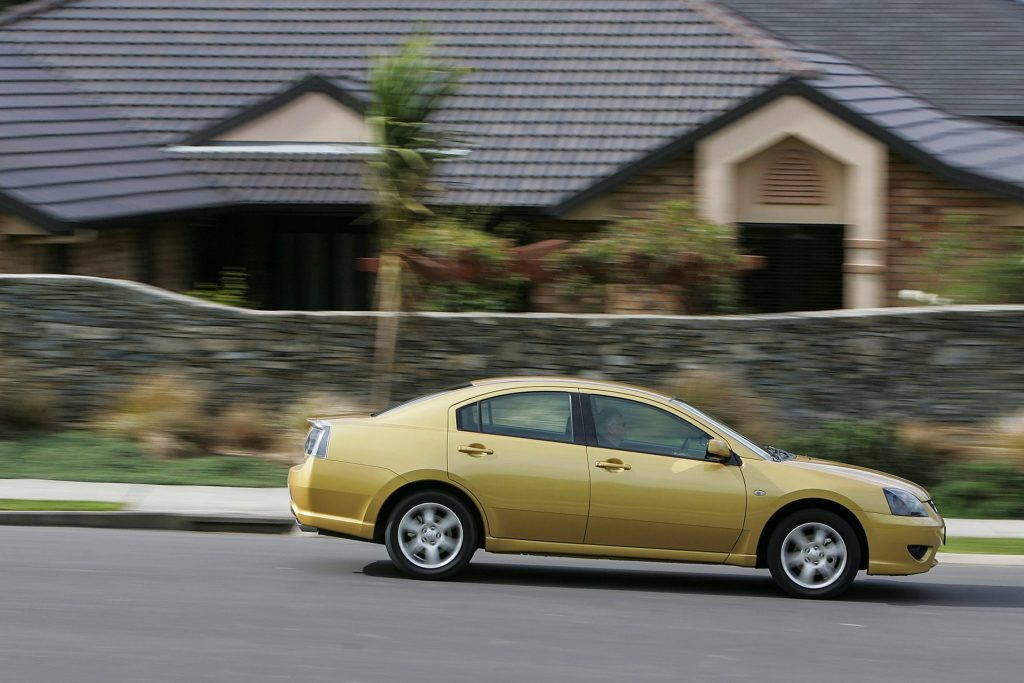
At the risk of offending quite a few devotees of Australia’s present crop of mongrel quasi-luxurious large cars, allow me to pause and shout a “Hallelujah, it’s about bloody time!” at this point. Big Ockers have always offered value, decent performance and interior space, but they’ve never before delivered these must-have class values with so much decorum. The 380 is the equivalent of a Shane Warne happily discussing the joys of fidelity and the meaning of life with the umpire between balls, and doing so in the soothing tones of a BBC newsreader, with not a hint of a cuss or stale cigarette smoke on his breath. It really is that couth.
Which is good news for the rather charming city of Adelaide. Having won the right to build the 380, the South Australian capital now has plenty riding on the future fate of the Mitsubishi. Notably 1500 jobs at the huge Tonsley Park factory, which is located a stone’s throw from the Commodore plant where Holden has just shown an entire shift the door. Mitsubishi Motors Australia Limited (MMAL) fought a long battle of round-table attrition to get the green light from Japan to build the 380. It wasn’t entirely without casualties. First to fall was an engine plant adjacent to the factory that built the 3.5 litre V6 of the previous Diamante. Next came the surprise resignation of Tom Phillips, MMAL’s mercurial ex-Toyota CEO.
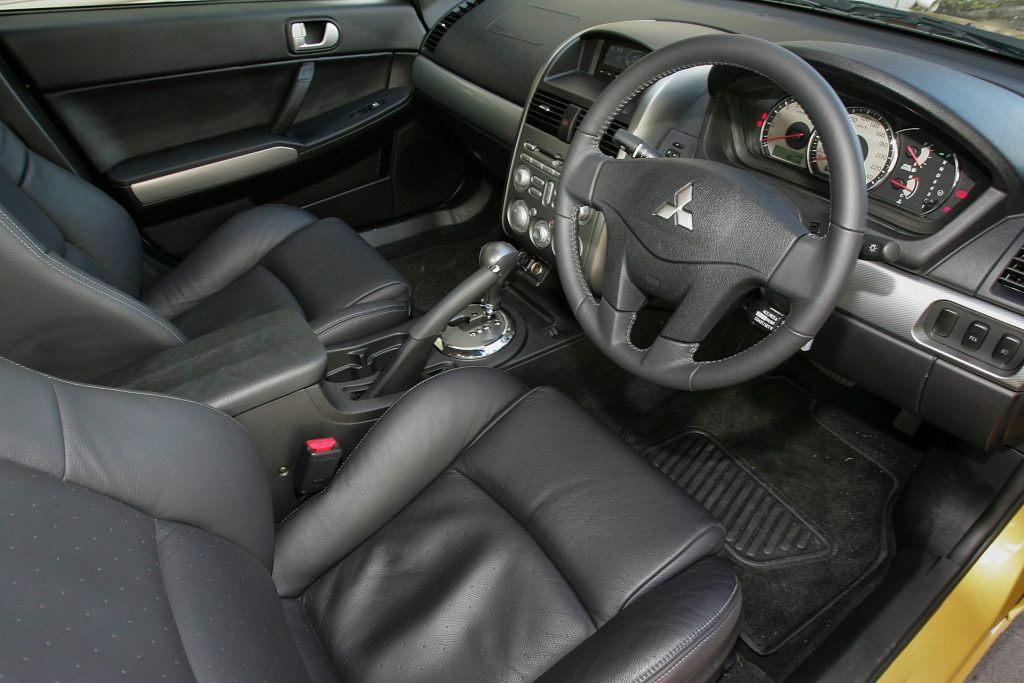
Phillips had always signalled that he was headed for the beach once he got the 380 into production, so I guess the only real surprise for the motoring press is that he didn’t stick around long enough to hear what we thought of the car for which he battled so long and hard. Hopefully Phillips has his feet up in a poolside deck chair in some tropical locale as you read this, and is absorbing the first impressions with a satisfied chuckle while sucking down a cool pina colada. The big fella has certainly deserved it, for he could go down in automotive history as the saviour of the Aussie car industry.
As we highlighted last month, the Mitsubishi Motor Corporation (MMC) is once again on the new product offensive after a substantial injection of cash from its parent company, Mitsubishi Heavy Industries. However, two years ago, when the crucial decision about whether to build the 380 had to be made, MMC was a punch-drunk battler on the ropes fighting for survival. It would have been an easy decision to close the Adelaide factory, and forget about making large Mitsubishi sedans for anywhere but the US. Instead, Phillips prevailed, and finally won boardroom approval for the $A600million budget he needed to build a convincing car to take on the likes of Falcon and Commodore.
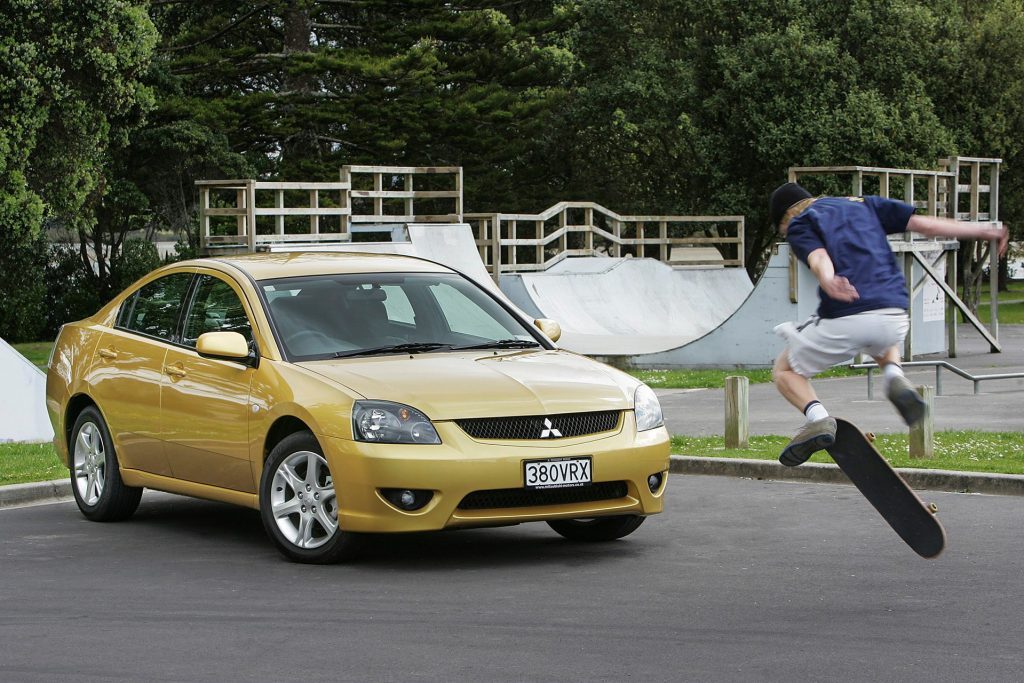
The sum rivals Holden’s spend on the 1997 VT Commodore upgrade as the most any Australian car maker has ever forked out on developing a new product. Almost half of the 380’s budget was consumed by giving the Tonsley factory the biggest refurbishment of its chequered 40-year history, which began with Chrysler Valiants. The biggest ticket item inside the facility is a new $A40million stamping press that spits out an entire side of the new sedan to bless it with torsional rigidity presently unrivalled by any other Aussie-made car.
Indeed, it is the structural integrity of the 380 that really makes its presence known when you drive one for the first time. But it’s the distinctive look of this fine-cut diamond that creates the first impression. Instead of the chunkiness expected of a Big Aussie, this one offers visual finesse. And when you see a 380 in natural light for the first time, there is no mistaking the car for any other. Based on the design of the US-market Galant, the 380 introduces a wedgy-ness not seen in a three-diamond sedan since the Sigma of the mid-1980s. The style won’t be to everyone’s taste, but most in this office gave it their full approval – and even the single dissenter had to applaud Mitsubishi for going into emotive design territory where the likes of Camry and Accord V6 currently fear to tread.
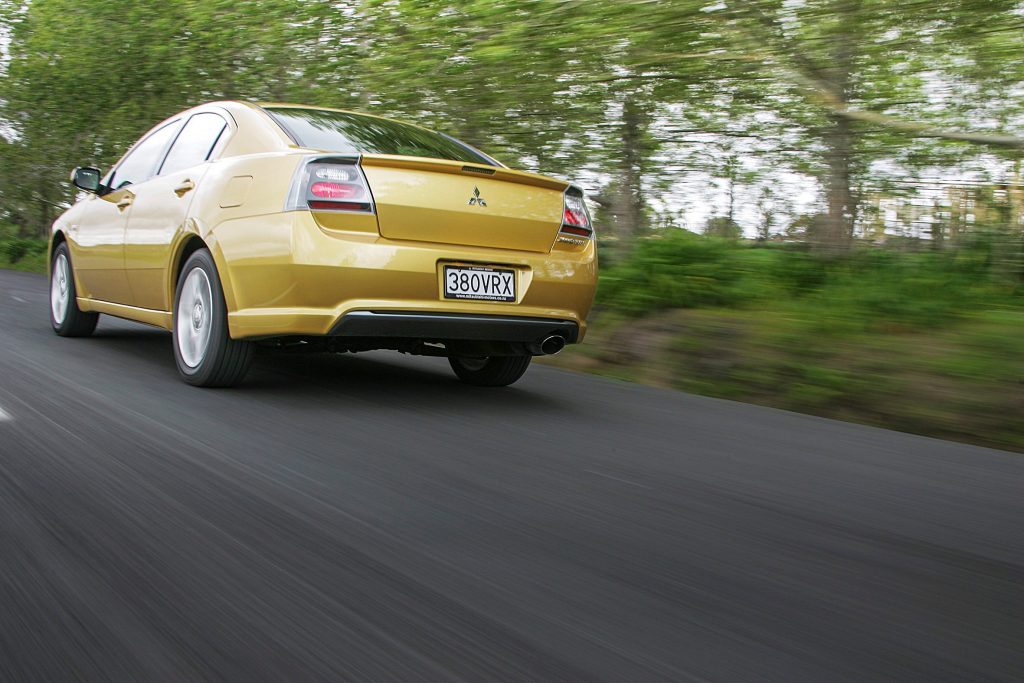
The Galant connection is only skin-deep; MMAL says just 30 per cent of the 380’s parts are shared with its Stateside cousin, and included in that tally are the roof, doors and quite a lot of the new 3.8 litre V6 engine.
An evolution of the Diamante’s outgoing 6G74 V6, the new 6G75 mill retains most of the basic architecture of its predecessor. This includes a block made of cast iron for proven durability, but one now bored and stroked to offer another 300cc of cubic capacity. A new crankshaft, electronic throttle control and higher-compression pistons promise more performance than the previous V6’s, and help offset the 120kg increase in the mass of the VRX model when comparing the 380 version to the car it replaces. The 6G75 is visually identical to the US Galant’s prime mover, but features MMAL-developed camshafts, new induction and exhaust plumbing, and different engine management programming to offer more power and torque to down-under consumers.
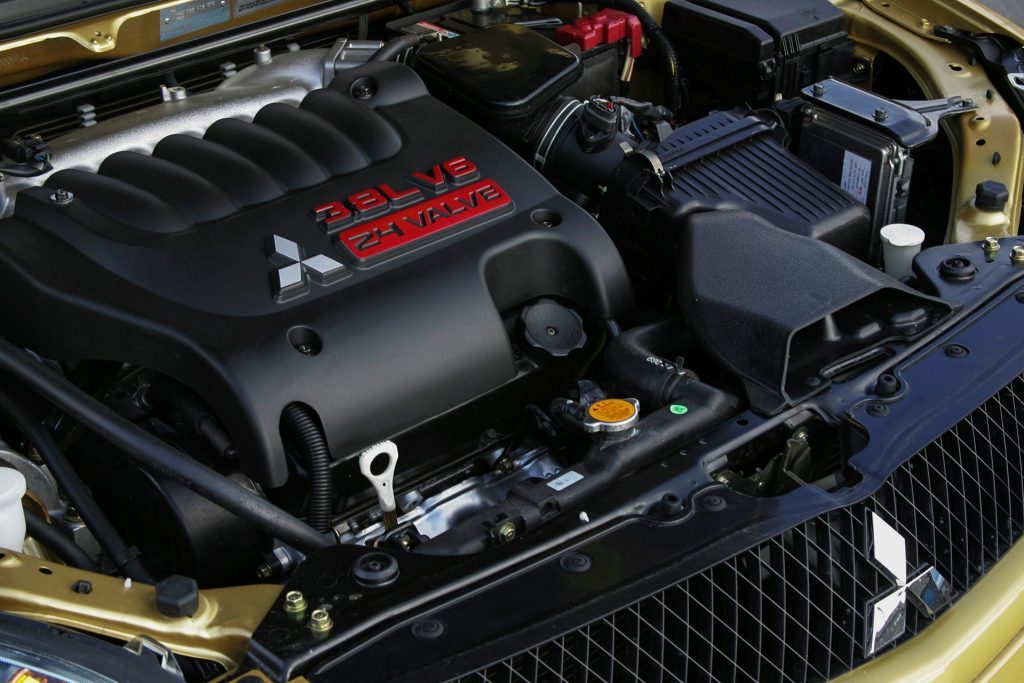
When it comes to the tailoring of the 6G75 to different markets, New Zealand even gets its own V6, with the performance-leading VRX and GT models offering 180kW of peak power in our showrooms instead of the usual 175. A less restrictive induction system is fitted to the NZ-spec 380 sports-variants, one incapable of passing Australia’s stringent new drive-by noise test. On paper, it all adds up to the most powerful front-drive V6 engine currently available in the large family-sedan class, the 380 VRX and GT offering three more kilowatts at the 380’s low 5250rpm peak than the Accord V6, and 10 more than Maxima.
The relatively low rpm of the 6G75’s power peak gives real insight into the ‘drive-ability’ of the powertrain of the 380 VRX. To achieve the same 170kW+ output, the Accord’s V6 must spin 1000rpm more. The Honda engine also can’t muster the torque of the 6G75, and needs 5000rpm to produce a peak of 287Nm. The Mitsubishi, meanwhile, out-scrums the entire front-drive V6 pack, with 343Nm of grunt arriving at 4000rpm. That’s 10Nm more torque than previous top-prop, Maxima, despite the lack of variable-valve-timing trickery in the 6G75’s single-cam cylinder heads.
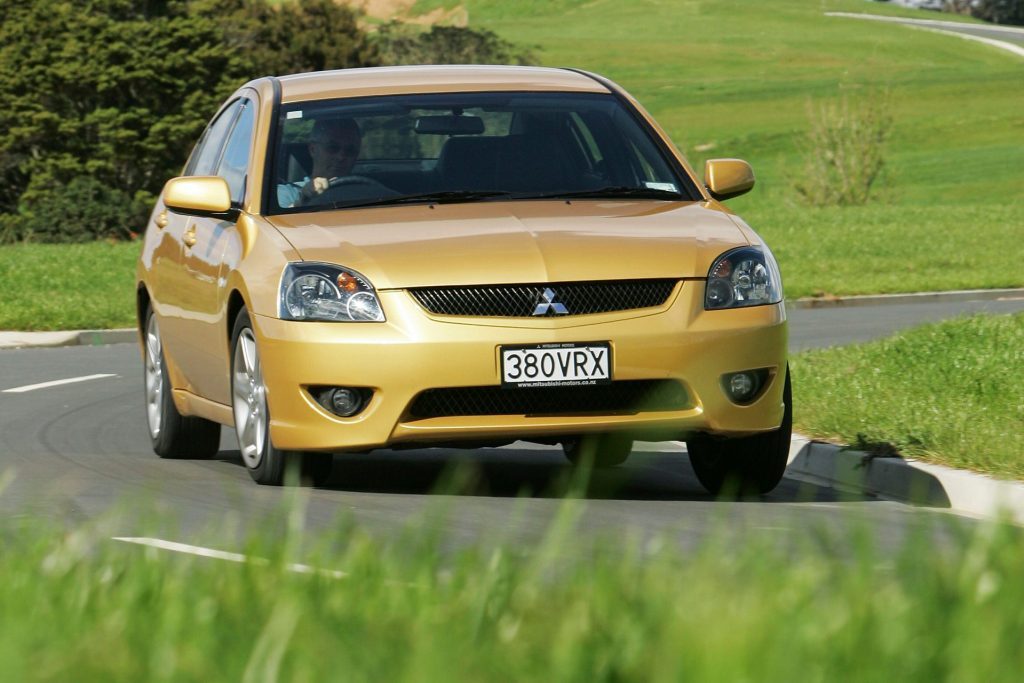
While the Mitsubishi engineers managed to extract more power and torque from less tech and rpm, the economical approach isn’t reflected by the refinement of the new 380’s powertrain. Our NZ-spec VRX never uttered anything more than the most endearing and cultured snarl, even during our acceleration testing. Naturally, Diamante’s reference-grade five-speed auto carries over with a few choice improvements, much to the envy of US buyers of the four-speed Galant. The result is a car capable of smooth and effortless overtaking performance, yet one that also possesses a cabin determined to be a cone of silence. The 380 slashes all the performance stats of the previous Diamante by considerable margins, including ambient cabin noise levels at 100km/h by nearly two decibels. It’s quicker to realise our absolute speed limit by almost a second, spends 12 fewer metres on the wrong side of the road during an 80-120km/h overtaking manoeuvre, and the 100-0km/h stopping distance is a life-saving five metres shorter.
Fuel consumption continues to be a Mitsubishi large-car strength. The Diamante might have performed well in events like the Energywise Rally, but our anecdotal road-test evidence suggests the 380 will do even better. Cruising at mean traffic speeds on the open road can result in consumption falling to a hatchback-like 8.3 litres per 100km. MMAL claims an overall consumption figure of 10.8L/100km from its testing over the ADR 80/01 cycle – currently the best figure of any Australian six-cylinder sedan.
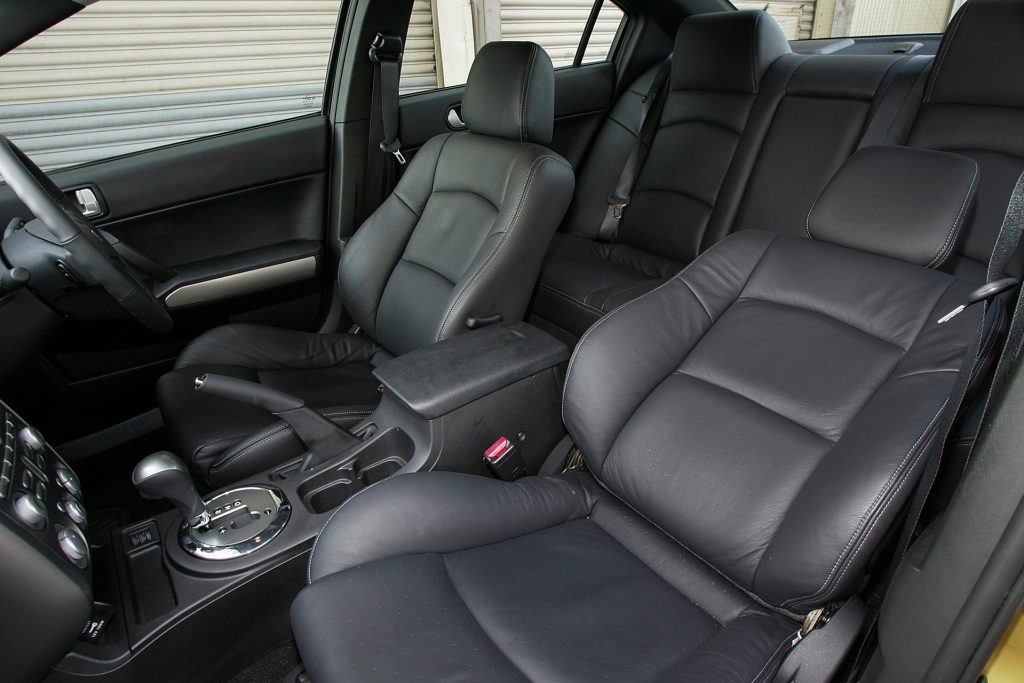
So, in terms of acceleration, stopping and fuel use, the 380 carries its extra weight over the Diamante lightly. The stronger body is the main contributor of the 380’s additional substance, and it pays big dynamic dividends in terms of steering precision and ride quality. There’s a solidity about the outer borders of the performance envelope of the 380’s chassis that is rare for a powerful, Japanese-brand large car. The Mitsubishi somehow combines compliant long travel suspension with tenacious grip levels, a reflection of much Australian engineering input into an already existing design. The steering wheel exhibits sharper turn-in quality than the flex-ier Diamante VRX, and delivers a greater sensation of front-tyre traction. The 380’s cornering limits are inevitably defined by understeer, which is only to be expected in a car that carries over 60 per cent of its weight on the front tyres. The big surprise is the cornering speed this supple-suspended car can achieve before the push threatens to nudge the nose wide, and the manner in which the finely calibrated traction control system jumps into action to keep the 380 on track. With a squeal of protest from the inside front tyre, the VRX simply carries on railing round the bend.
Turn the TC off, and the result will be a slower drive off the corner as the pilot needs to ease the throttle to quell the understeer. The lift produces sudden weight transfer, yet the 380’s tied-down rear-end acts like a storm anchor to steady the ship, and keeps the driver’s heart rate well below the redline.
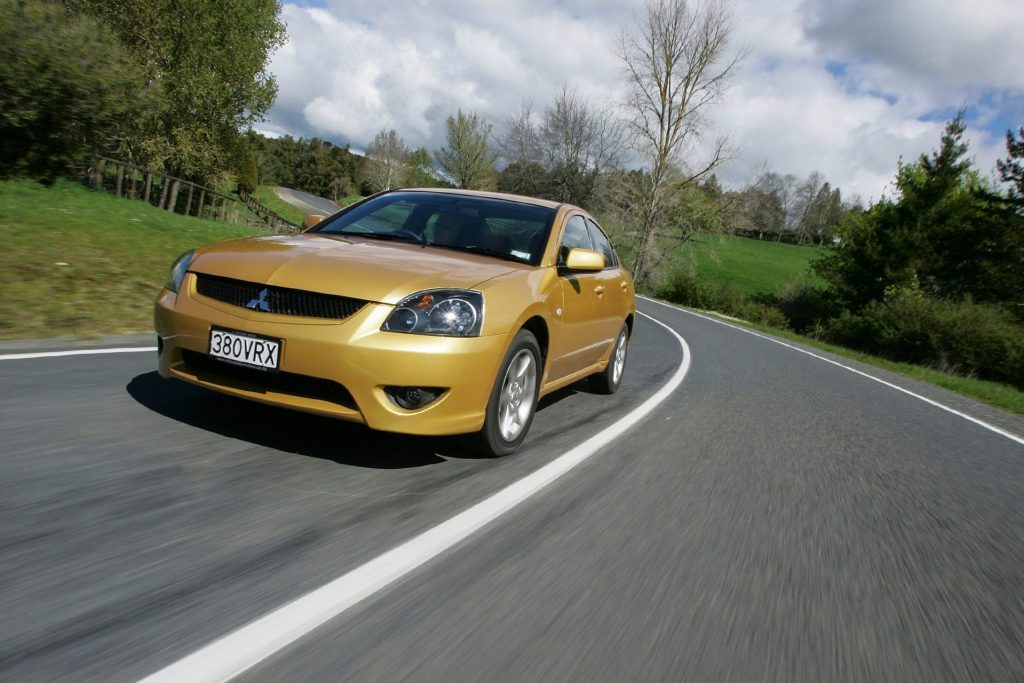
Representing a decade of progress over the Diamante, the 380 makes the packaging of four airbags and traction control across an entire model range an Aussie-car first. Other notable standard equipment includes front seatbelt pretensioners and force-limiters, a 10-function trip computer, and a six-speaker CD/MP3 player with remote steering-wheel controls. As a VRX model, our pleasantly engaging test sample also gained 17” alloys and a sports body-kit, including a natty integrated rear spoiler.
Pricing will determine the 380’s impact on the New Zealand market. This is a far better car for the same money than the Diamante it replaces, so much so it will redefine the value that has made Australian sedans so popular on this side of the Tasman.
| Model | Mitsubishi 380 VRX |
| Price | $44,990 |
| Engine | 3828cc, V6, EFI |
| Power | 180kW/343Nm |
| Drivetrain | 5-speed automatic, FWD |
| Fuel Use | 10.8L/100km |
| 0-100km/h | 7.38sec |
| Weight | 1692kg |
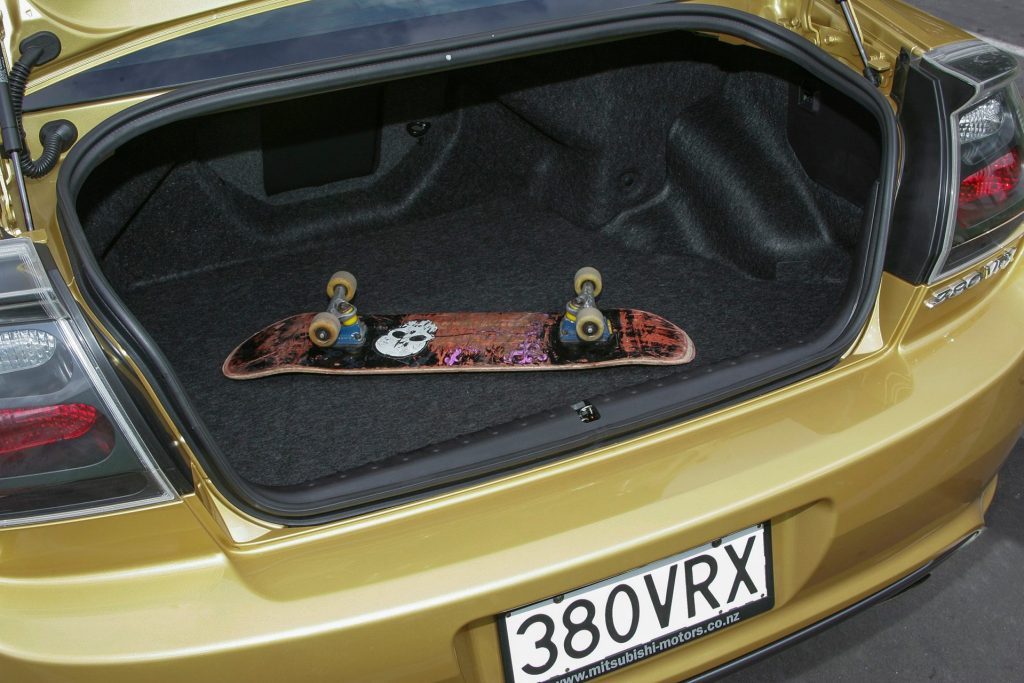
This article was first published in the November 2005 issue of NZ Autocar Magazine.


